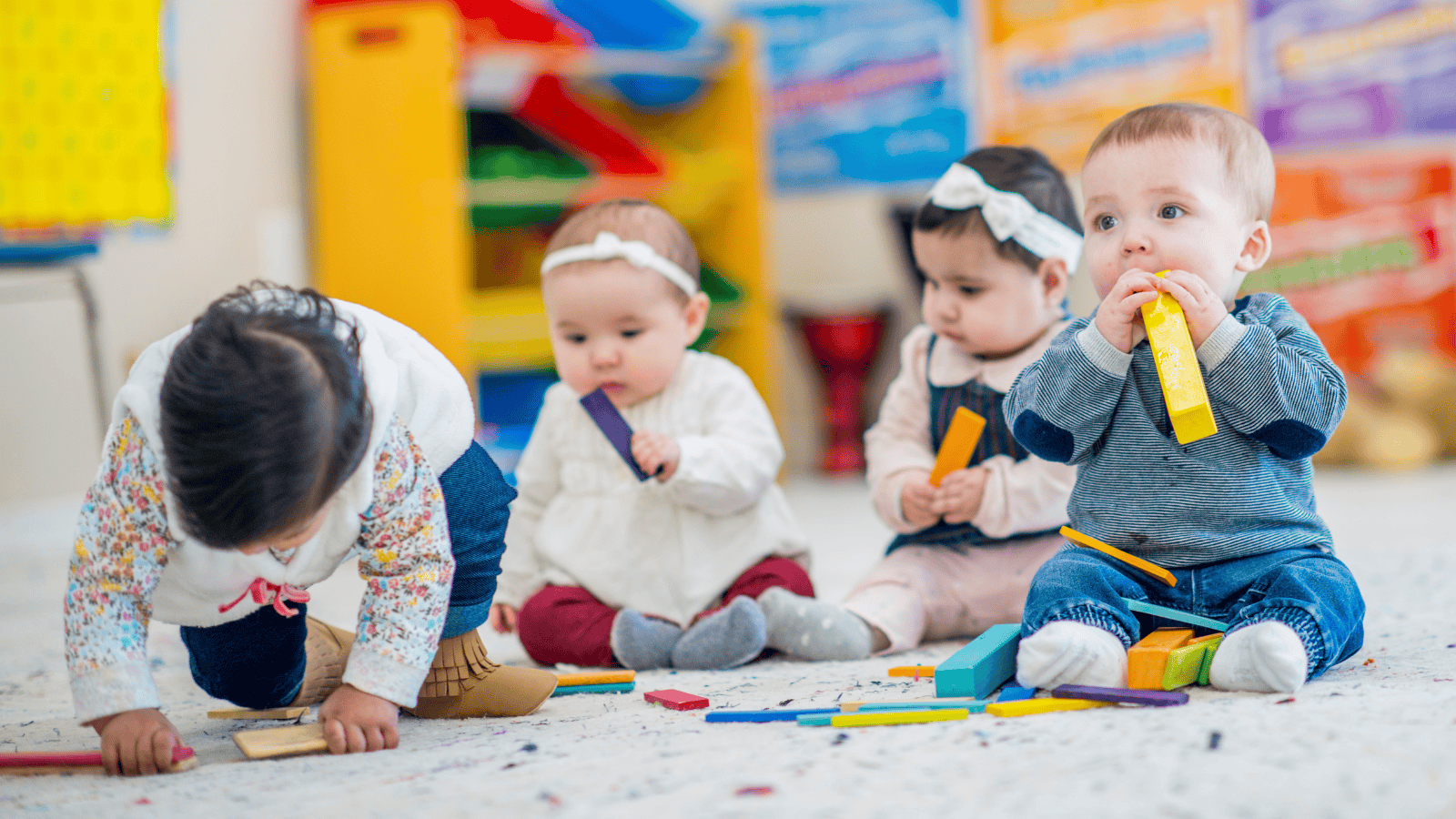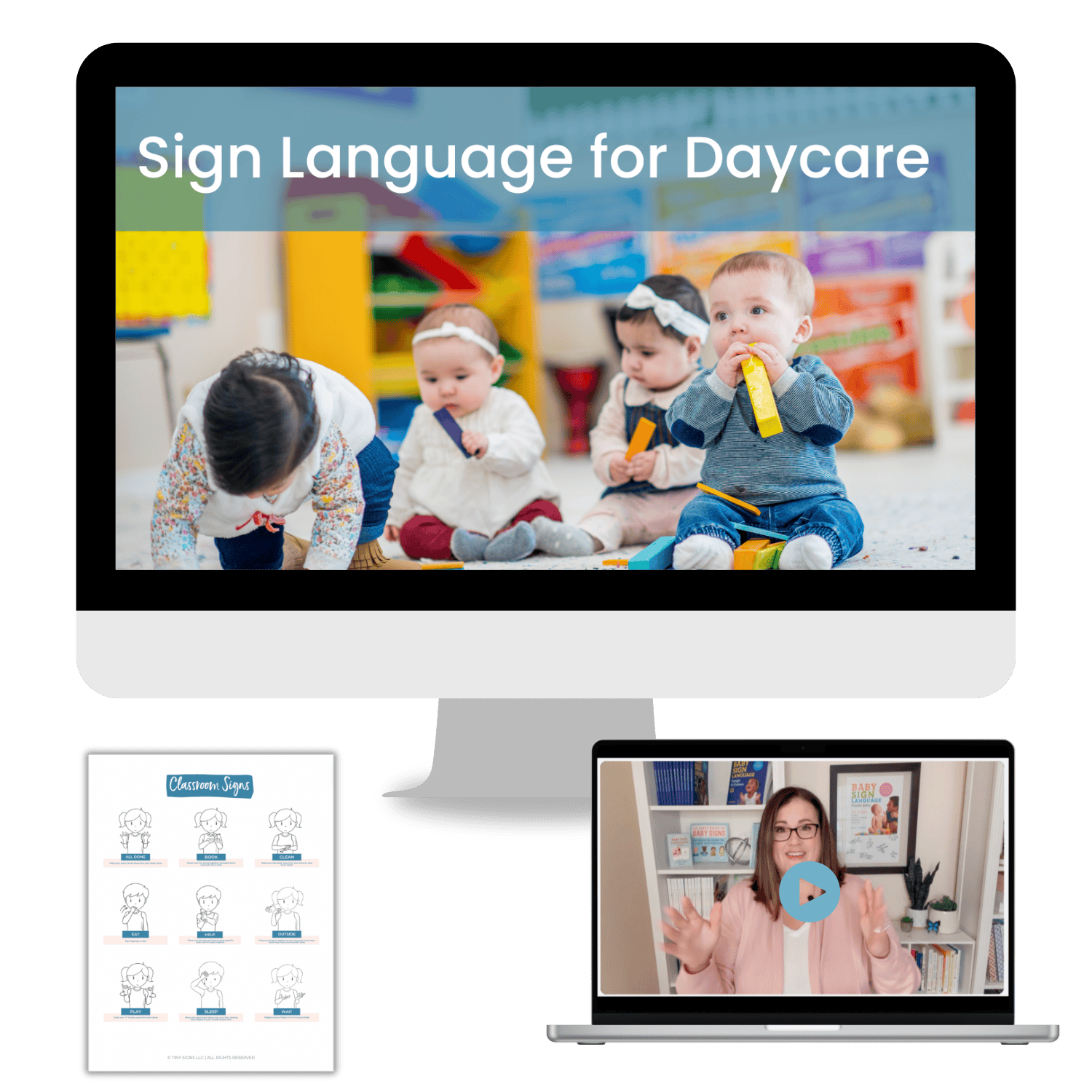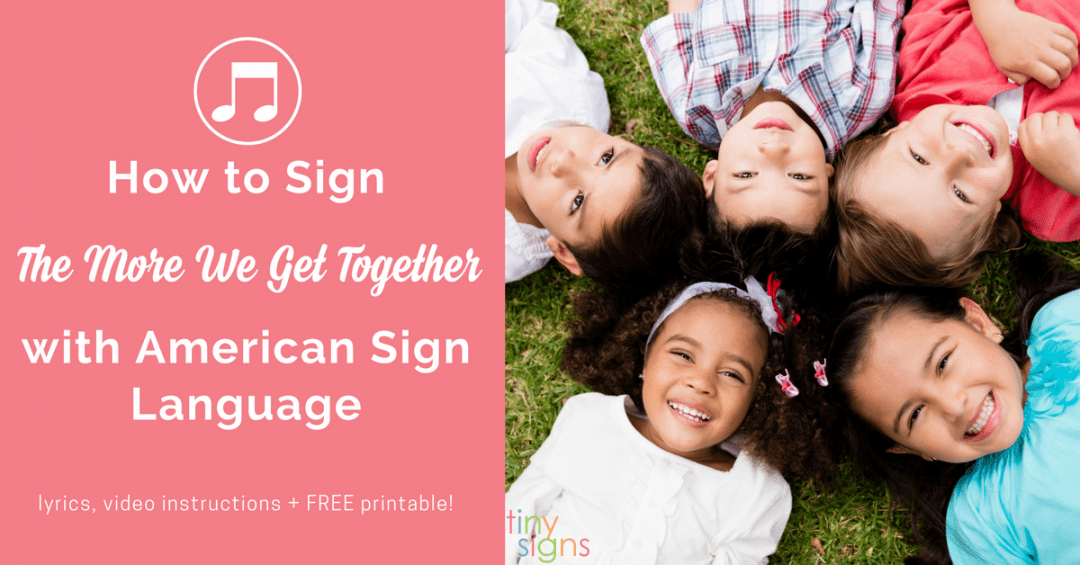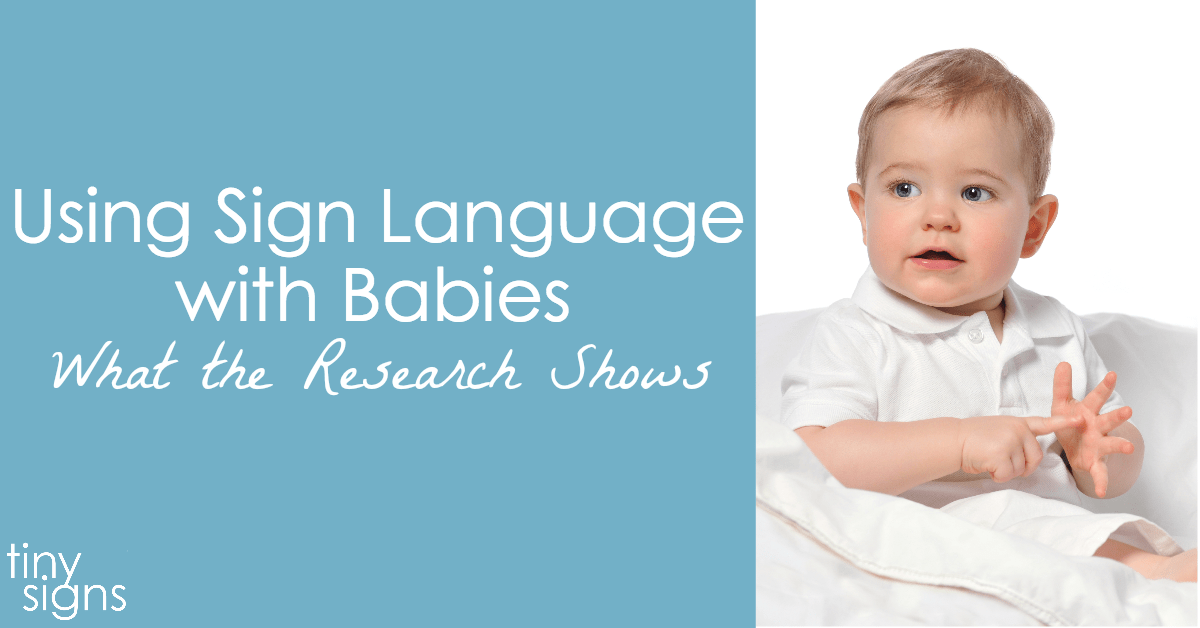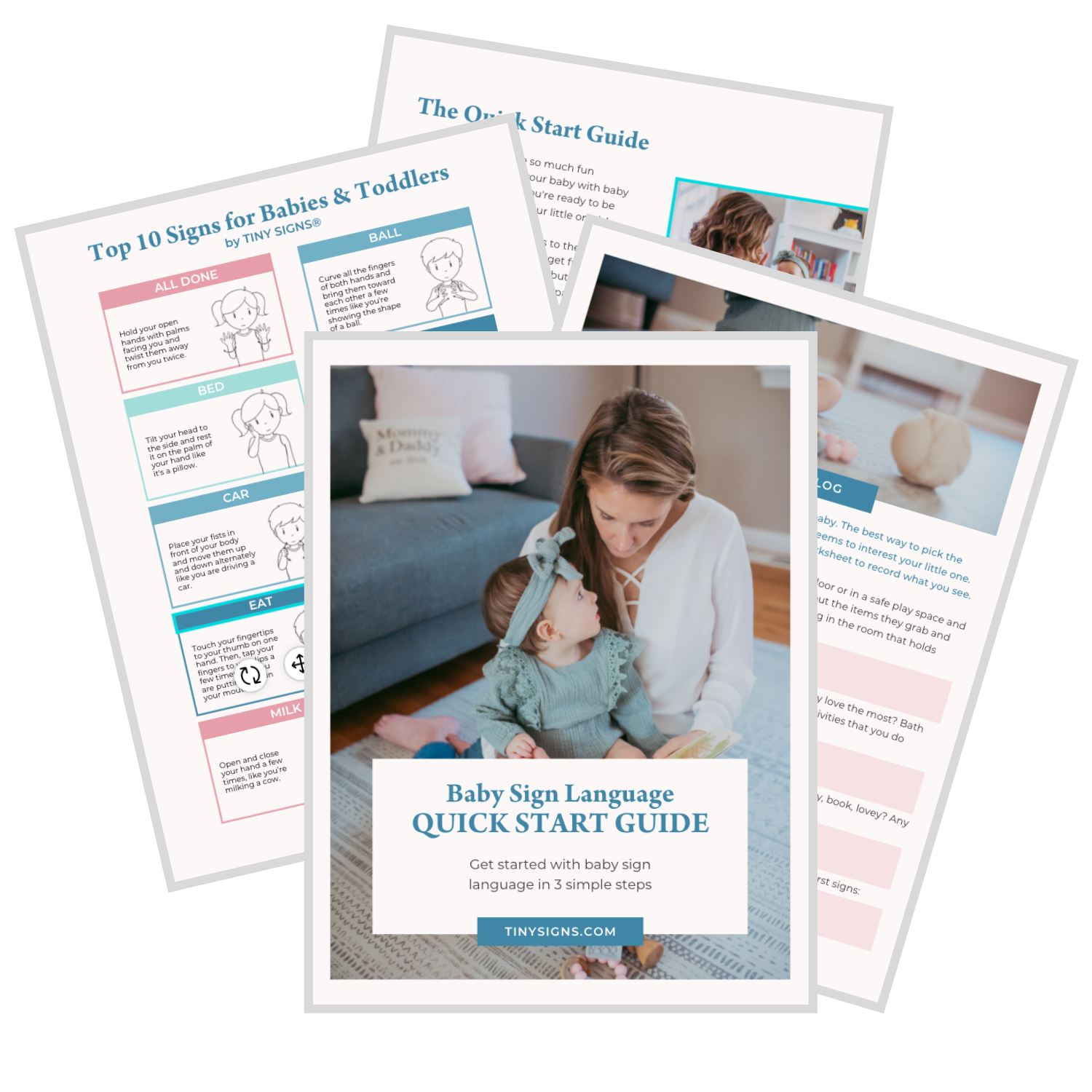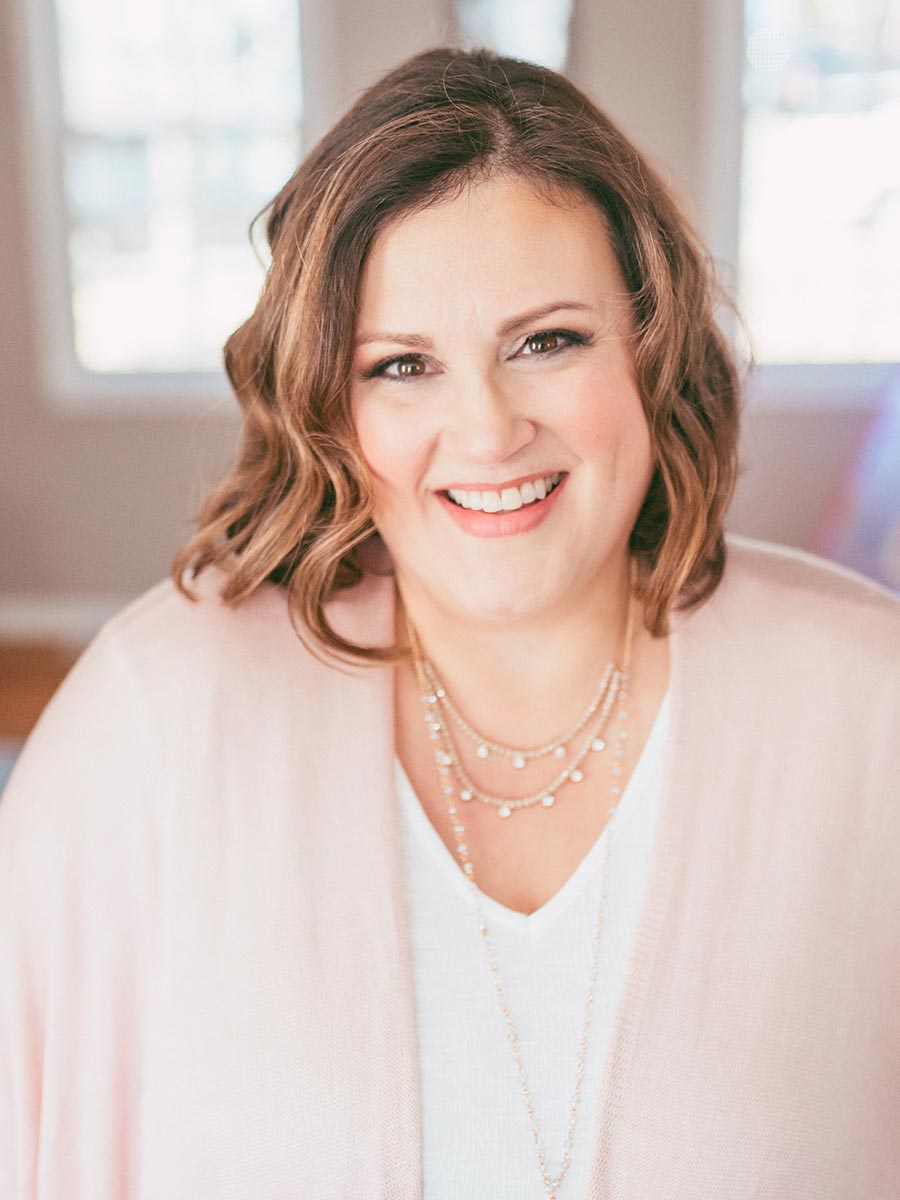Introducing Sign Language in the Early Childhood Classroom
So you’re thinking about adding some American Sign Language (ASL) to your early childhood classroom – that’s fantastic!
If you’ve got questions about getting started or looking for a place to start, I hope this article will help you.
The are so many benefits to using sign language with young children as a learning tool. But if you’ve never studied ASL, it can be a little overwhelming. Which signs should I start with? How do I learn to do the signs? How do I introduce them to the classroom? Am I qualified to teach this?
Teaching American Sign Language When You’re a Student Yourself
I’ll start by saying that, in an ideal world, every classroom would have access to an experienced ASL user and member of the Deaf community, as well as a skilled interpreter, to help you introduce signing to your young students. But since that’s probably not possible, you’ll have to do your best on your own – and you can totally do this. You already teach the little ones in your class songs with fingerplays already (hello “Itsy Bitsy Spider”), and introducing basic ASL vocabulary is basically the same process. You can totally do this!
It’s ok if you are learning the signs right along with your students. You don’t have to be fluent to introduce the basics. Just as you don’t have to be fluent in Spanish to teach your students that rojo = red, you can teach some basic ASL vocabulary in your classroom with just a handful of signs in your repertoire. Just be warned… your little ones will get the hang of signing quickly and start asking you the signs for more items once they get the hang of it…so be prepared to ramp up your learning too.
American Sign Language for Classroom Routines
To get started, I recommend adding sign language to your existing classroom routines. Every classroom, whether an infant, toddler, preschool or mixed-age setting has a daily rhythm and structure to their day. The order will vary from classroom to classroom, as will what you call each activity or time of day, but almost all early childhood classrooms will include some – or all – of the following in their daily routine:
- Arrival Time
- Meeting Time (or Circle Time)
- Play Time (or Free Choice or Center Time)
- Clean Up Time
- Story Time (or Quiet Reading Time)
- Snack Time/Lunch Time
- Outside Play or Recess
- Nap Time (or Rest Time)
- Dismissal Time
Does your daily routine look something like this? If so, you can easily add a few signs into your existing routine seamlessly. Even if your schedule is not super structured, you can easily add a few basics signs throughout the day and before you know it, it will become a fun part of your day and something your students look forward to and enjoy too!
Signs for Daily Classroom Routines
Here are some really easy to learn, basic ASL signs that you can start using each and every day of the week in your classroom:
- ALL DONE
- BOOK
- CLEAN
- EAT
- HELP
- OUTSIDE
- PLAY
- SLEEP
- WAIT
A Resource to Help You!
We’ve created the perfect resource to help you confidently introduce signs into your classroom! Introducing Sign Language for Daycare – a small collection of videos and a helpful printable so you can start signing today!

